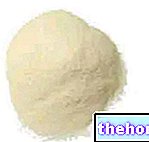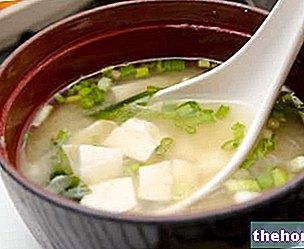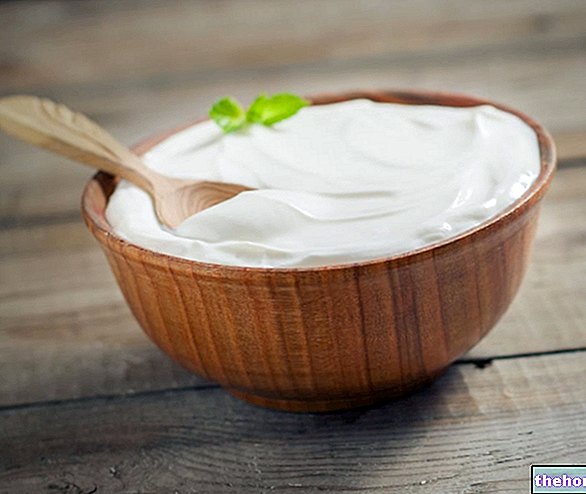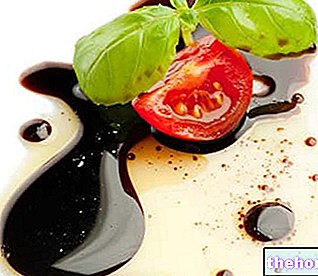Foods rich in dextrose
Dextrose, or glucose if you prefer, is a very common sugar; it is found in the free state in some vegetables, especially in ripe fruit, and in honey. Combined with other monosaccharides, it is part of the composition of numerous disaccharides (sucrose, maltose, lactose and cellobiose) and is the exclusive constituent of polysaccharides such as starch, glycogen and cellulose; therefore, it is not surprising that dextrose is the organic compound more widespread in nature.
Functions
Functions of dextrose in the human organism
From the chemical point of view, glucose is a monosaccharide (a simple sugar) that has six carbon atoms (it is a hexose, in particular an aldohexose because it has an aldehyde functionality).

Glucose is the main energy source of our cells and many other organisms, be they complex or extremely simple, such as some bacteria. The cells also store dextrose in the form of polymers, in particular starch in the plant kingdom and glycogen in the animal one.
In man, glucose is the only energy source of the brain and red blood cells; also for this reason it is essential that its rate in the blood (called glycaemia) is maintained around 5 mmol / L and this happens thanks to a series of hormones, in particular insulin and glucagon, and to the important metabolic role of the liver. the blood glucose concentration falls below this level, a state of neurological suffering may occur, more or less accompanied by symptoms of another nature (see hypoglycemia). Conversely, a too high concentration determines serious consequences when it persists in the long term (see diabetes).
Production and supplements
Dextrose is industrially obtained from the total hydrolysis of starch, generally coming from corn or potato starch; it is presented as a white crystalline powder, similar to sugar but with a less sweet taste (in sugar or sucrose glucose is combined with fructose, which has a sweetening power 1.5 times higher than sugar). The sweetening power of dextrose is 70-75% of that of white table sugar. Dextrose is water soluble with endothermic action (absorbs heat); in fact a pinch of dextrose on the tongue causes a pleasant sensation of freshness. Furthermore, it allows a better perception of aromas. Dextrose, like sugar, also has a good bacteriostatic quality, due to its high osmotic pressure.
Dextrose is widely used in the food industry, in the preparation of the most varied confectionery and bakery products, and in pharmaceuticals, as a sweetener, excipient and energetic substance in various forms (tablets, syrups, physiological solutions, etc.). Dextrose is added in ice creams to avoid sugar crystallization and lower the freezing point of the mixture, in percentages equal to "8-12%; by virtue of its lower sweetening power than sugar, dextrose is used when it is necessary to keep the total solids content of the recipe decreasing the sweet taste, sometimes made excessive by the presence of some ingredients such as certain types of fruit.
Dextrose is marketed as a food supplement and used as such above all in the post-workout, to favor the restoration of muscle energy supplies and facilitate the entry of glucose and amino acids into the fibers.
Other Foods - Sweeteners Acesulfame K Aspartame Sugar beet Sugar cane Sodium cyclamate Dextrose Sweeteners Erythritol Fructose Maltose Mannitol Molasses Saccharin Saccharose Maple syrup Agave syrup Fructose syrup Glucose syrup Sugar sorbitol Articles Stevia Sucralitol sugar SWEETENERS Categories Alcoholic Foods Meat Cereals and derivatives Sweeteners Sweets Offal Fruit Dried fruit Milk and Legumes Oils and Fats Fish and fishery products Salami Spices Vegetables Health recipes Appetizers Bread, Pizza and Brioche First courses Second courses Vegetables and Salads Sweets and Desserts Ice cream and sorbets Syrups, liqueurs and grappas Basic Preparations ---- In the Kitchen with leftovers Carnival recipes Christmas recipes Light diet recipes tici Recipes for the Holidays Recipes for Valentine's Day Vegetarian Recipes Protein Recipes Regional Recipes Vegan Recipes




.jpg)























